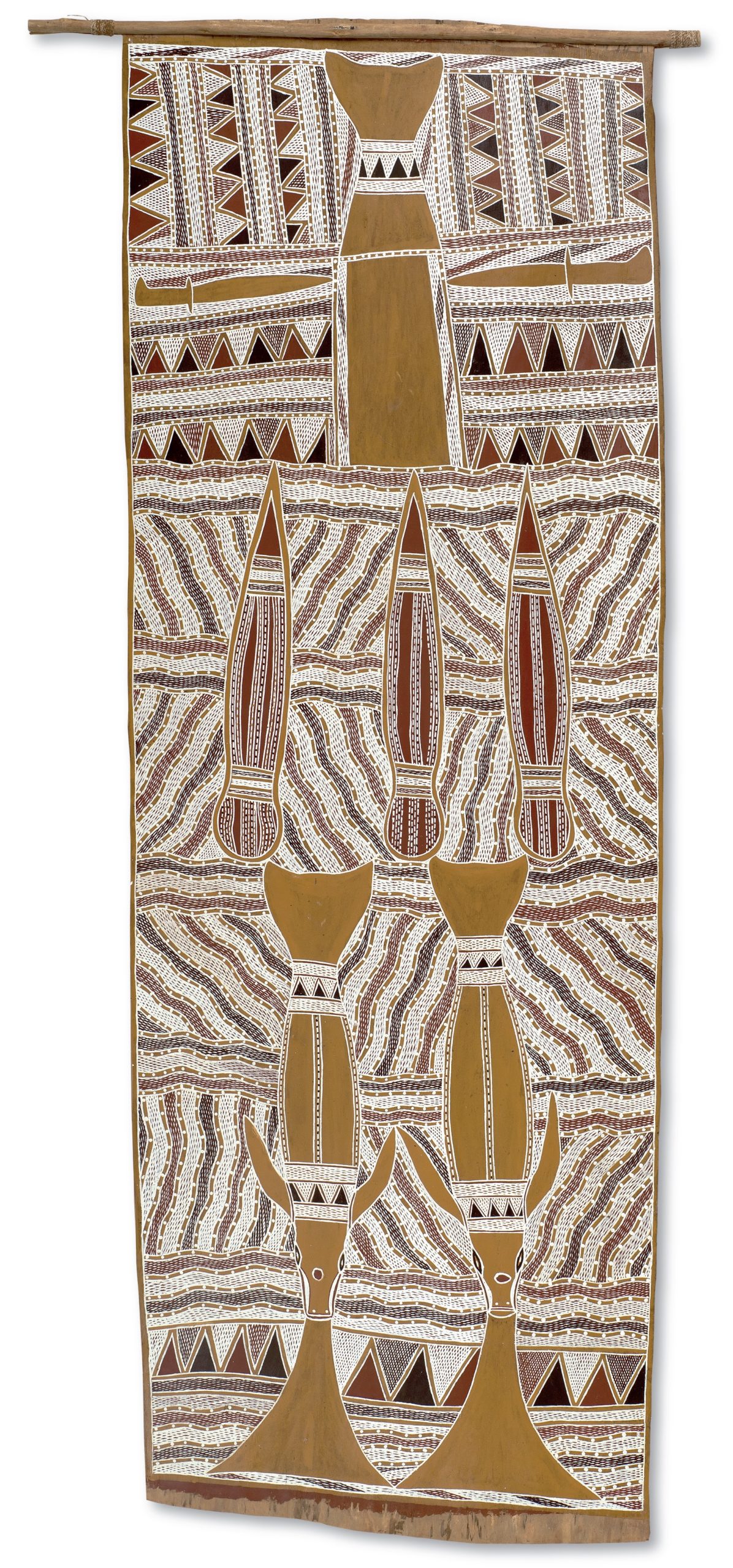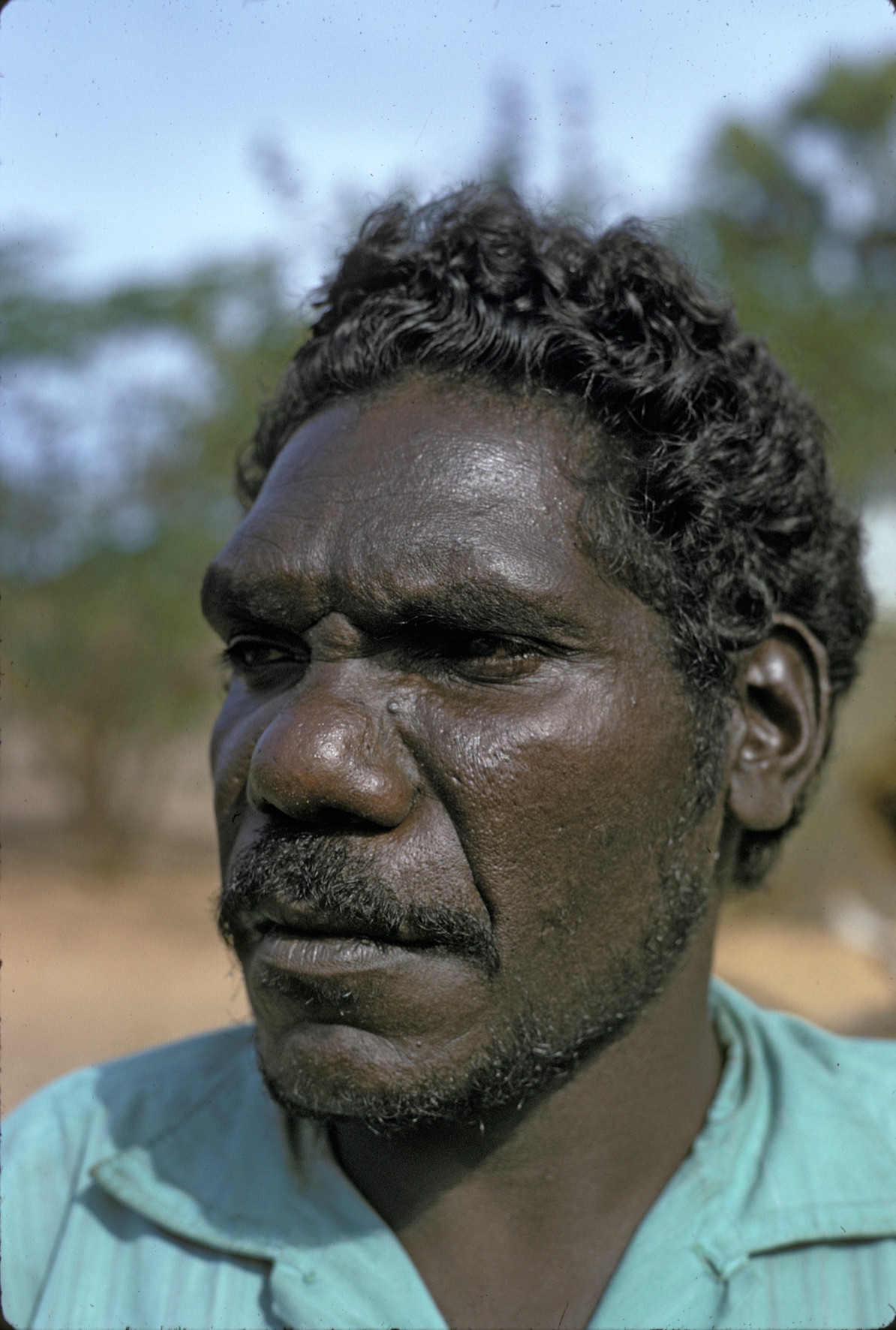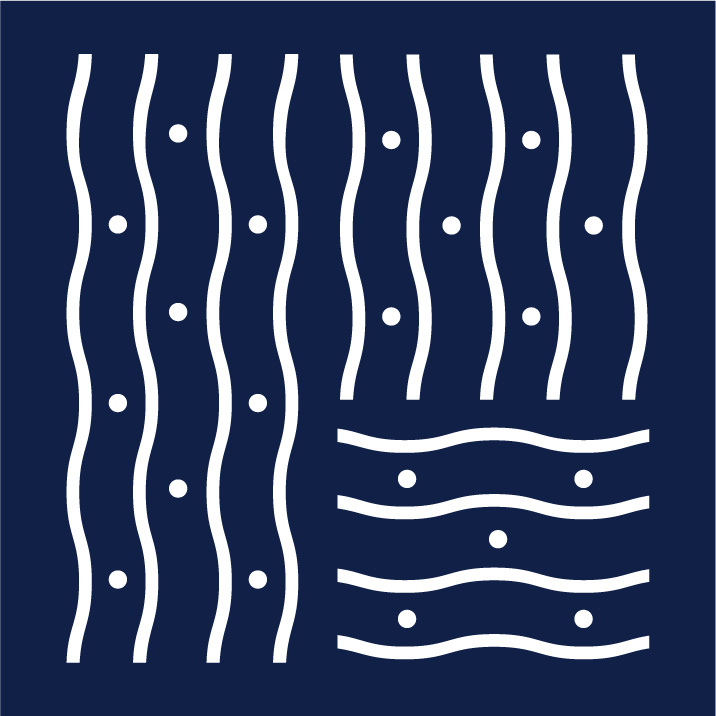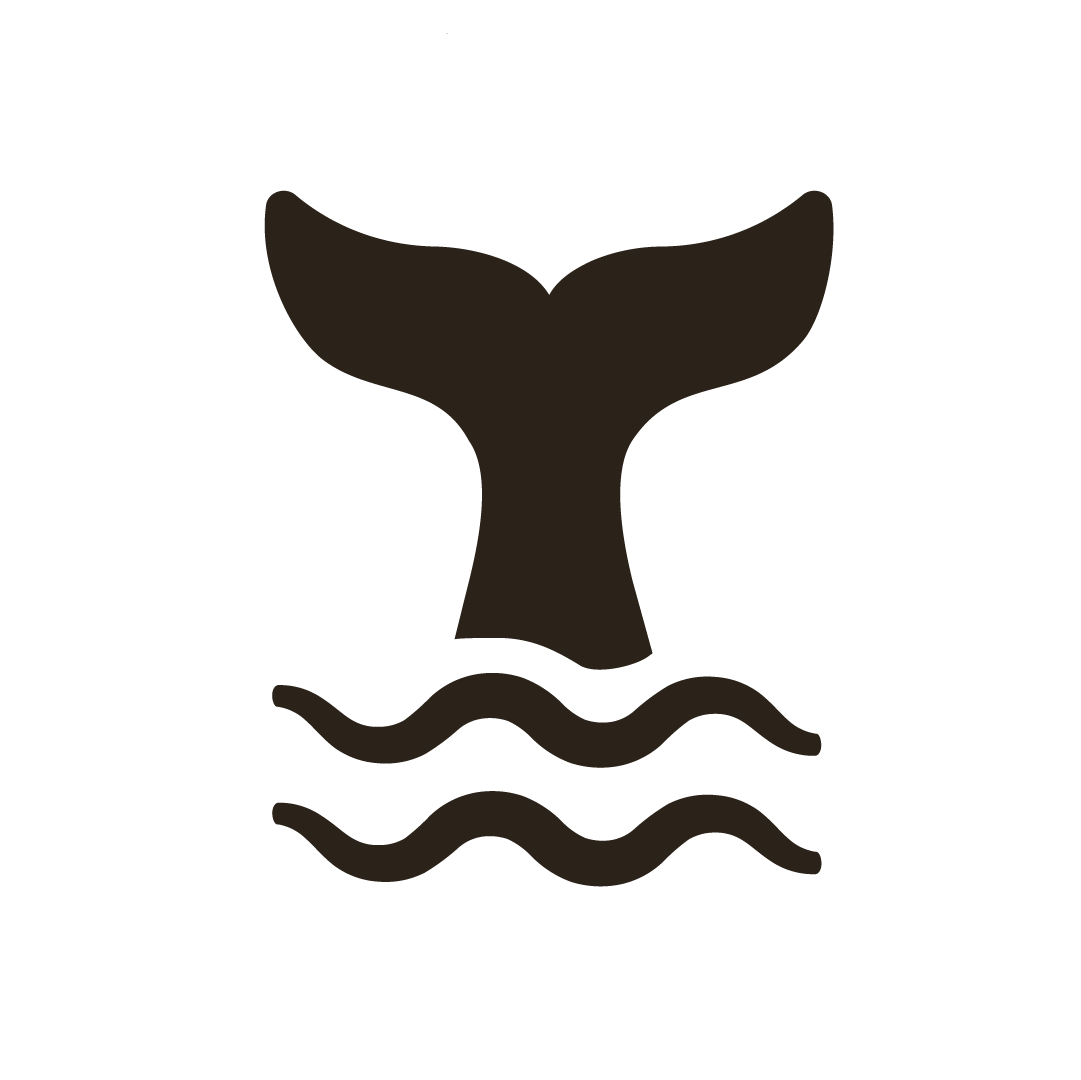
"Our sacred knowledge has been etched by the sea where the ocean named Wulamba roars. The wide open sea has a huge tail of waves. Water that roars. This water existed in ancestral times and the cycle continues. It is massive ancient endless infinity."
– ḎULA ŊURRUWUTTHUN
More Info
Yarrinya is a Munyuku clan estate at the head of a peninsula separating Myaoola and Grindall Bays. The peninsula ends with rocky outcrops extending out into the sea and continuing beneath the surface of the water. The surrounding sea is often turbulent and dangerous.
The bottom section of this painting is set some distance from the shore, where the ancestral Whale named Mirinyuŋu can be seen moving through Manbuyŋa, the strong current that flows into the bay from Yarrinya. The Whale's spume rises into the air, echoing the shape of its tail. Both the spume and the tail symbolize the anvil-shaped cumulus cloud of the wet season, as they move in from the horizon. The red and black triangular pattern also refers to the clouds as they build up.
The top section of the painting refers to Yarrinya. During the Waŋarr (ancestral times), Mirrinyuŋu was slaughtered by two spirit men named Wurramala or Matjitji. The hunters belonged to the same clan as the Whale, making the whale their brother according to the Yolŋu system of gurruṯu, which extends kinship to all things in the natural world. When the whale washed up on the beach, the hunters used their stone knives to butcher it. The beach became putrid, contaminated with blood and fat. The men severed the tail of the Whale and cut its body into long strips, represented by the parallel bands of miny'tji in the top section of the painting.
After the Wurramala men had dissected the Whale, they thought of the stone knives as being contaminated. They threw their knives into the depths of the ocean. Horrified by their own actions, they left, driven away by flies and the rotting decay of the Whale's carcass. The knives turned into a rock, which shares the name Garapana, and can be seen in the central panel the work. The rock is said to be as sharp as a stone knife. This rock is completely submerged and surrounded by smaller rocks beneath the ocean. The only evidence of the rock is the swirling waters, called Garrŋgirr or Manbunya, which crash around it, and break in white foam at the waters' surface.
– Buku-Larrŋgay Mulka Centre
Additional Information
Decade
1995
Medium
Natural pigments on eucalyptus bark
Dimensions (IN)
92 ⅛ x 41 5/16
Dimensions (CM)
234 x 105
Credit
Collection of Robert Kaplan and Margaret Levi
Narrative
Munyuku
The Munyuku clan belongs to the Yirritja moiety. Major spiritual themes relate to marine life...
Songline
Mirinyuŋu | The Whale
During the Waŋarr, two spirit men from the Munyuku clan hunted and killed a whale...
Location
1990s
Buku-Larrŋgay Mulka Centre began the 1990s in a phase of rebuilding. By the end of...
About The Artist(s)

Clan
Munyuku
Artist Dates
c.1936-2001
Ḏula Ŋurruwuttun
The son of Djimbaryun Ŋurruwutthun, Ḏula Ŋurruwutthun began painting in the 1960s and continued until his death in 2001. A revered ceremonial leader, he played an important role as an educator and mentor for younger artists while ensuring cultural protocols were maintained at Buku-Larrŋgay Mulka.
Collections Represented
Art Gallery of New South Wales
Art Gallery of Western Australia
Kluge-Ruhe Aboriginal Art Collection of the University of Virginia

